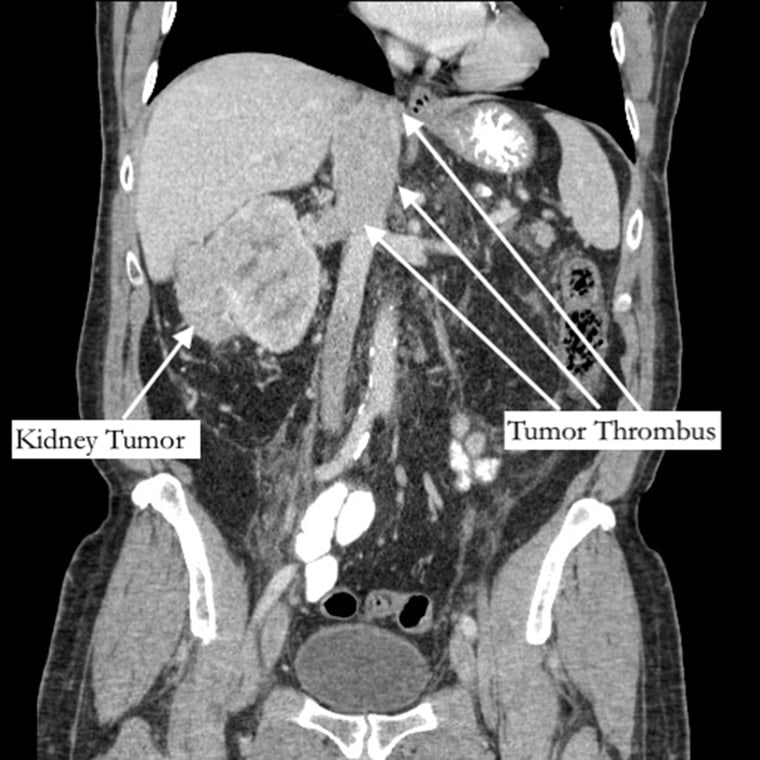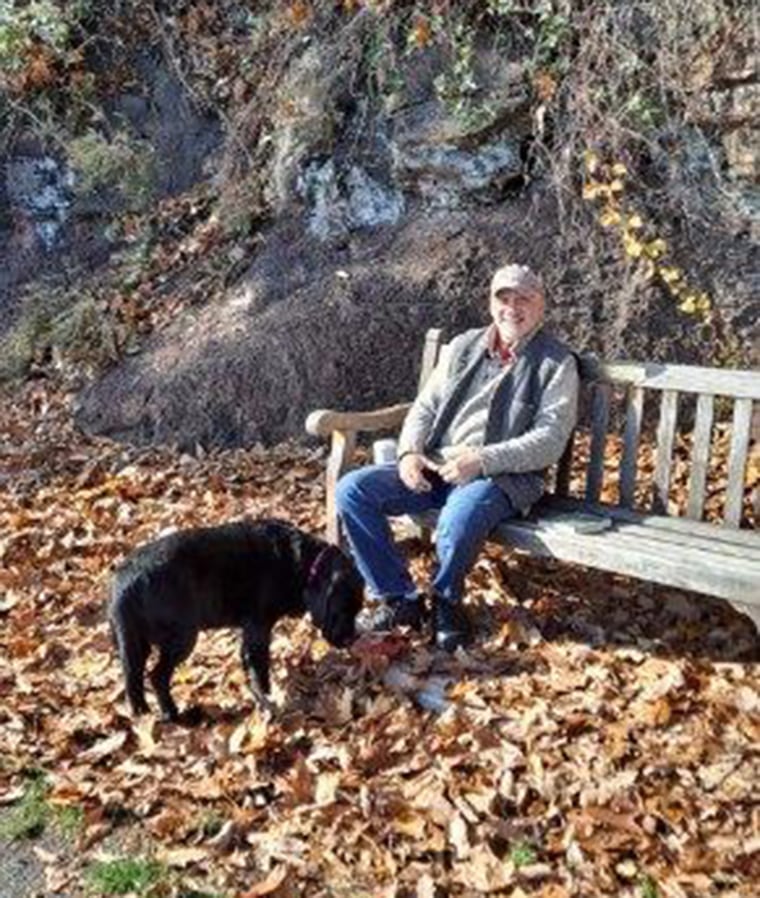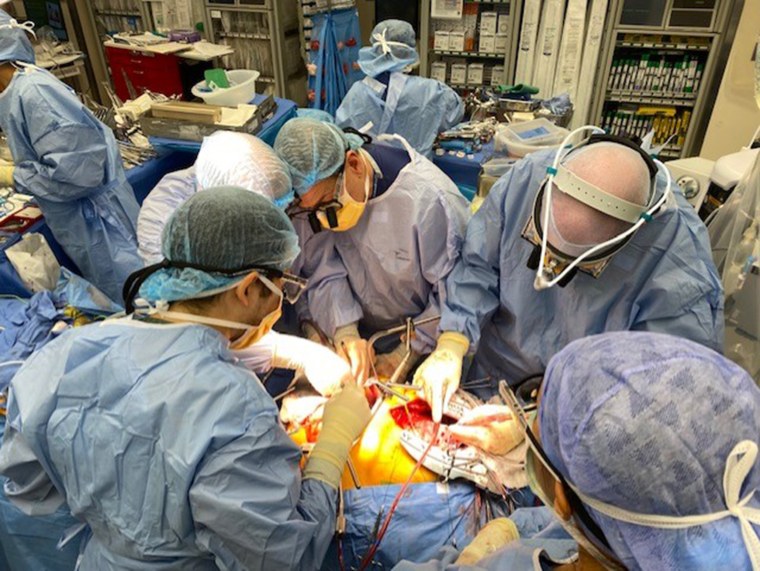In March 2022, Richard Bernstein’s leg became swollen. For about five years, he had experienced right toe pain and wondered if it was related to that. At the same time, he noticed a bump in his abdomen and thought maybe he had a hernia. But he soon learned it was something much more serious.
“It was a lump growing on my kidney,” Bernstein, who lives in Bergen County, New Jersey, told TODAY. “(My doctor) sent me for a scan and they discovered that the kidney was not looking good.”
Bernstein visited Dr. Michael Grasso, the chair of urology at Phelps Hospital in Sleepy Hollow, New York, and learned his situation was more dire than he realized. The 64-year-old had stage 3 kidney cancer, and the massive tumor was preventing proper blood flow throughout his body.
“He told me I had about five days to live,” Bernstein said.
Leg swelling sign of serious diagnosis
Grasso was surprised that Bernstein seemed asymptomatic.
“I remember sitting in the office and him saying, ‘You know I don’t feel bad.’ (I was thinking) ‘Are you kidding? This is the real deal,’” Grasso told TODAY. “He presented with relatively mild symptoms, his foot was swollen, and he was complaining about local symptoms.”
Bernstein didn’t notice anything different other than a swelling, which caused a slight limp.

“There was no pain at all,” he said.Grasso said kidney cancer often doesn’t have noticeable symptoms other than back pain. This means diagnosis can be delayed so it’s found in a later stage. Bernstein’s tumor blocked his blood flow, causing a serious complication.
“As a practical matter, he really did only have a few days to live,” Grasso said.
Bernstein’s cancerous kidney tumor had grown into the vena cava, the main vein going to the heart, and blood from the lower part of his body couldn’t flow up to the heart. The blood instead collected in his leg, causing the swelling. Grasso also felt surprised that Bernstein’s abdomen wasn’t also distended with fluid.
“His belly was flat,” he explained. “He didn’t have any symptoms of severe intra-abdominal venous pressure.”
Bernstein was admitted to the hospital to undergo tests and scans prior to surgery, which would require the assistance of a cardiac and vascular surgeon, too. That’s when doctors made another discovery — two of Bernstein’s coronary arteries were also blocked.
“That’s what they used to call the widow maker. … It’s a surgical emergency," Grasso said.
As Bernstein waited for the doctors to plan his surgery, his health dramatically worsened as the blood began pooling in his abdomen.
“Over a couple of days, he was deteriorating very rapidly,” Grasso said. “Kidney cancer can grow relatively slowly … for a period of time and then make a dramatic change for whatever reason — we don’t really understand why — and can grow very, very rapidly.”
Bernstein, though, took everything in stride.
“It was a little shocking,” he said. “I have an unusual attitude, and my attitude is that ‘it is what is,’ and there’s not much we can do about it.”
Multi-disciplinary team performs 10-hour surgery
Bernstein felt surprised that he needed to also undergo bypass surgery while having his tumor removed. On weekends, he takes his dog, Keagan, on four-hour hikes and only occasionally noticed he felt tired.
But he still didn’t worry too much about the procedure that included three surgeons and a team of nurses and other medical professions.
“It was scary because of the unknown,” Bernstein said. “(The bypass) was a little surprising for me because I’ve been working out since I was 25 years old. I thought that was a little unusual.”
First, Grasso removed the tumor from the abdomen. To remove the mass from the vena cava, the doctors had to stop blood flowing in most of the body and protect the brain. To do that, they cool the body to about 18 degrees centigrade from a normal body temperature of 36 degrees centigrade. While Dr. Jonathan Hemli, a cardiothoracic surgeon, cooled Bernstein, he also performed a double bypass surgery.
“It added an element to the operation that we didn’t expect and but it didn’t particularly prolong the operation,” Hemli told TODAY. “It would have been really disappointing to cure him of his kidney cancer only to learn in six months, nine months a year the poor man had a heart attack and didn’t survive that because he had blockages in his coronary arteries.”
The lessened blood flow made it easier for the Dr. Alfio Carroccio and Grasso to work later to remove the tumor.
“We have to turn the circulation off so there is no bleeding, but in order to turn the circulation off, in order for that to be safe, he has to be cold,” Hemli explained. “I have to put him on the heart lung machine to cool him.”
Then Carroccio, chief of vascular surgery at Lenox Hill Hospital, opened the vena cava, and he and Grasso removed the tumor, which extended into the heart, and repaired it where the tumor started growing into the wall of the vein.
“We timed things so we take out the tumor thrombus, a combination of a tumor and clot from within that main vein that drains the whole lower half of the body,” Carroccio told TODAY. “When it extends up to the heart the safest way is actually arresting the heart and arresting to total circulation so you can open the heart and it helps with extracting the tumor.”
The entire procedure took anywhere from 10 to 12 hours.
“It was fortunate to catch this before it was too late, and it was close,” Carroccio said. “He’s walking around with blockage in his heart he knows nothing about. He has a tumor sitting in his abdomen that is pretty large and has a clot blocking most of the blood flow to half his body. The only consequence he’s noticing is maybe he gets a little winded when he walks and his foot is a little swollen.”
Recovery
It's been a year since Bernstein's surgery and his cancer has remained stable. He still struggles to get around. Now when Bernstein walks Keagan he has to take a break every half mile or so. He carries a chair so if he feels exhausted he can rest. As he recovered from surgery, he underwent physical therapy and felt surprised by how hard it's been.
“I had to learn how to walk again. When you have all these cuts on your chest they’re always concerned that you’re going to fall and break what they put together,” he said. “My big concern was not to fall.”

The swelling had impacted the control that he had from his knee down, and he still limps a bit. He’s hoping more physical therapy will correct that.
“I’m so grateful to the doctors,” Bernstein said. “It’s a hidden thing, kidney cancer. It doesn’t really cause pain. You’d never know you had it.”
